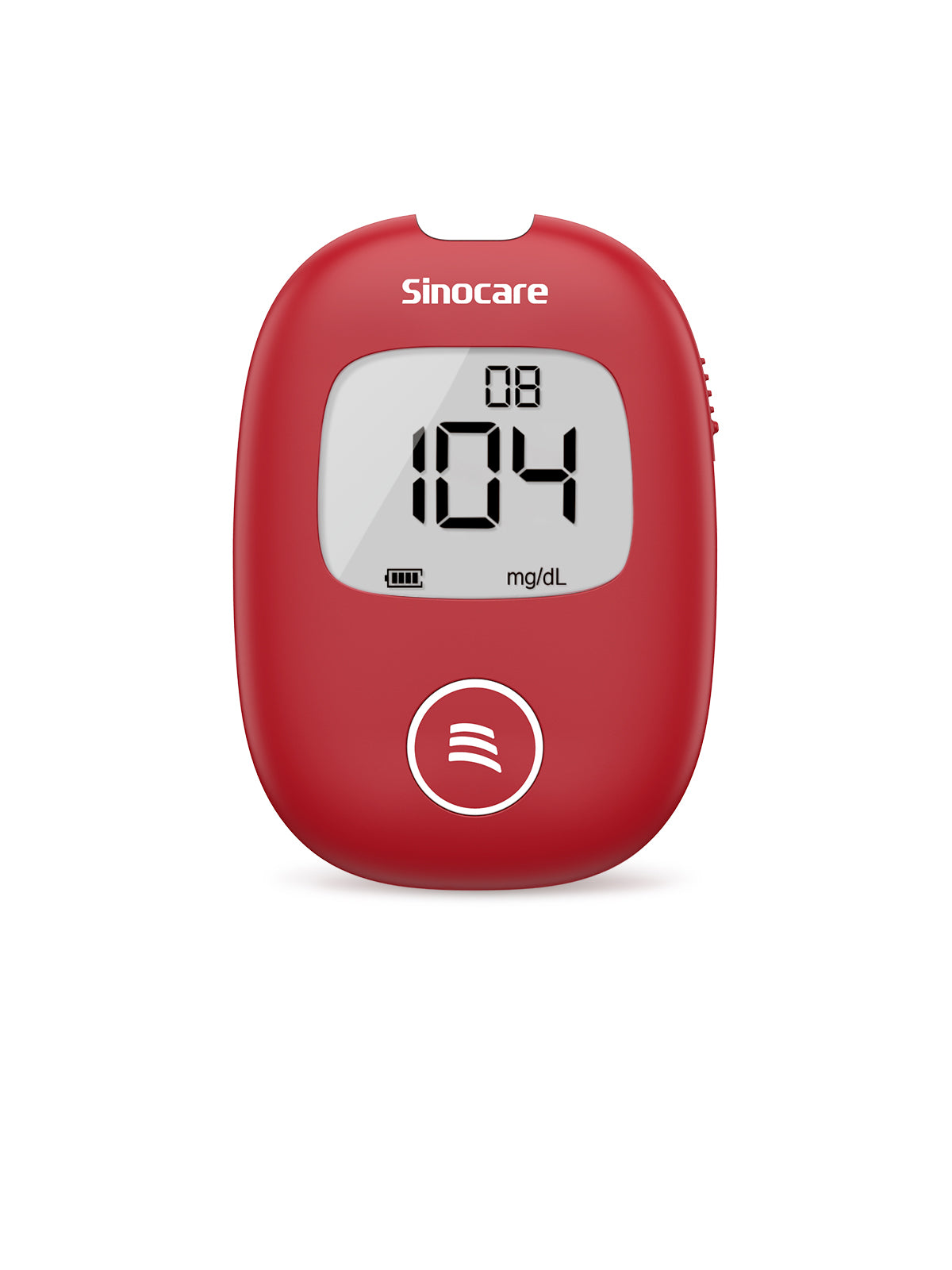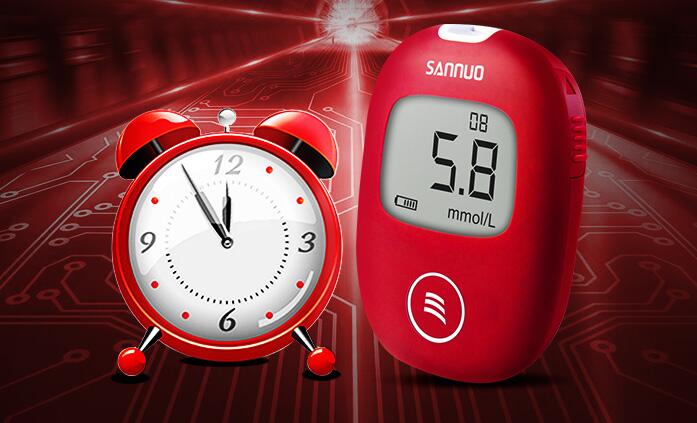Exercise itself has many benefits for diabetes treatment. First, exercise treatment can reduce insulin resistance, because type 2 diabetes is closely related to insulin resistance. Secondly, it increases sugar utilization and makes insulin sensitivity improve. Third, exercise can also have a protective effect on the b-cells of the pancreatic islets by improving circulation and metabolism. In addition, exercise can make the heart and body happy, which is of great help to increase their confidence in overcoming the disease, and at the same time, by improving cardiovascular function and improving their own quality, they can prevent and control the further occurrence and development of complications. Thus, exercise is a form of diabetes treatment that cannot be ignored. However, some people find that their blood sugar rises after exercising. What is going on here? What should we pay attention to? How do exercise for diabetics to lower blood sugar? What exercises can cause blood sugar to rise?
The most suitable exercise for diabetics is moderate-intensity aerobic + resistance training
A more appropriate exercise regimen for patients with type 2 diabetes is a combination of aerobic exercise and resistance training. Although aerobic exercise helps to improve the patient's metabolic capacity, it does not have a significant effect on glucose tolerance and long-term glycemic control. Therefore, it is recommended that you should combine aerobic exercise with resistance exercise to achieve better glycemic control. Patients with diabetes should engage in regular, low-intensity exercise with long cumulative duration to help control blood sugar; at the same time, avoid high-intensity exercise to prevent large fluctuations in blood sugar. If sweating is high, supplement with low-sugar or sugar-free beverages to avoid damage triggered by a rapid rise in blood sugar.
Aerobic exercise programs are better with low to medium-intensity rhythmic exercises, such as walking, jogging, cycling, swimming, and medium intensity aerobic gymnastics (such as calisthenics, tai chi) where the whole body muscles are involved in the activity, and so on. If you think these are boring, then you can choose table tennis, badminton, hula hoops, etc.
Jogging for diabetics
Jogging is known as a gentle cardiovascular gymnastic exercise, and it produces a very good simulation of the heart and blood vessels of the body. Sweating during running is very beneficial to health, it is not the same as the concept of sauna or sweating due to high ambient temperature. The sweat from the accelerated beating of the heart is meaningful because diabetic patients are acidic and sweating can make the body environment alkaline, thus reducing the incidence of inflammation and playing a very good role in wound healing and skin repair.

Walking for diabetics
Walking is a relatively leisurely exercise that emphasizes a natural way of exercising. This type of exercise is most beneficial to diabetic patients, because walking does not cause a rise in blood pressure due to excessive exertion, and it can also provide timely assistance when encountering a rapid heartbeat or another discomfort. Walking while massaging the abdomen is suitable for patients with indigestion and chronic diseases of the gastrointestinal tract. Therefore, walking is not only good for diabetes, but also for other diseases.

In addition to this, it is best to perform
resistance training
2 to 3 times a week, once every other day. Resistance exercise is the exercise of muscle and body flexibility. The Chinese Diabetes Exercise Treatment Guide suggests that the glucose-lowering effect of exercise 90 minutes after a meal is stronger than 30 minutes or 60 minutes after a meal, so you can exercise an hour and a half after eating. If the conditions of office workers do not allow, you can exercise after breakfast and after dinner. Massage Gun can be used after resistance training to effectively relieve muscle sorenessYoga for diabetics
Yoga is also a relatively mild form of exercise, which mainly uses the body to increase the strength of various muscle groups, but also to exercise the flexibility of the body, which for some diabetic patients suffering from neuropathy, can improve balance and stability, in the improvement at the same time can also make blood sugar sustained stability. However, it is important to know that some people with joint or spinal diseases should be extra cautious, because yoga may aggravate the joint or spinal condition.

Swimming for diabetics
If some young diabetics want to help lower their blood sugar through high-intensity aerobic exercise, they can choose swimming, which can exercise the muscles of the whole body and prevent the burden on the joints, while the energy consumed by swimming is relatively large, which can also play an effective role in lowering and stabilizing blood sugar while increasing muscle strength.
In general, diabetics who want to stabilize their blood sugar through exercise can take the above-mentioned exercise methods when exercising, and only by choosing the right exercise can they effectively lower their blood sugar and keep it stable. In addition to exercise, diabetic patients should pay attention to all aspects of daily life, in order to make blood sugar is not easy to repeatedly fluctuate.
What exercise may raise blood sugar?
It has been found that when a person's exercise intensity exceeds a certain threshold, blood sugar levels will rise. This threshold is generally 80% to 90% of the maximum heart rate.
A simple way to calculate maximum heart rate: maximum heart rate = 220 - age
When the intensity of exercise exceeds this limit, our breathing becomes difficult and we have to gasp for air to meet the body's demand for oxygen, which stimulates the sympathetic nerves and leads to an increase in blood sugar and even induces diabetic ketoacidosis. Therefore, it is appropriate for sugar lovers to exercise at a mild to moderate intensity to avoid the elevation of blood sugar caused by excessive exercise intensity.
So how is moderate intensity? It's when you feel slightly out of breath when you exercise but it doesn't affect your speech, and your body sweats slightly after the exercise.
What exercise will cause hypoglycemia?
As we all know, exercise can improve insulin sensitivity and help lower blood sugar effectively. However, hypoglycemia can occur if you are not careful. Hypoglycemia is divided into hypoglycemia during exercise and delayed hypoglycemia. The occurrence of hypoglycemia during exercise is related to low blood sugar before exercise or improper use of hypoglycemic drugs.
If the blood sugar before exercise is <5.6 mmol/L, you should eat before you start exercising.
If the amount of exercise is large, the dosage of glucose-lowering drugs needs to be reduced appropriately. And over-exercise can lead to delayed hypoglycemia several hours after exercise or at night.
Hearing this, sugar lovers may feel rather dizzy, so how can you know what to do for exercise? Teach you a way, that is --- blood sugar monitoring. When you start exercising, you need to monitor your blood sugar. If your blood sugar is within a safe range, you can start exercising.
Glucose monitoring before, during, and after exercise
Performing pre-, post- and during-exercise monitoring is beneficial in detecting blood glucose abnormalities.
Pre-exercise: If a diabetic patient has not adjusted the dose of glucose-lowering medication or diet before exercise, then blood glucose needs to be measured before exercise.
If blood glucose is <5.6mmol/L before exercise, carbohydrates should be eaten before starting exercise.
During exercise: If any uncomfortable symptoms occur during exercise, stop the exercise immediately and measure the blood glucose. If hypoglycemia occurs, you need to eat candy, chocolate, or sugary drinks immediately; such as if the blood sugar is significantly elevated, when the blood sugar exceeds 16.7mmol/L, you should stop exercising.
Post-exercise: Monitoring blood glucose 30 minutes after exercise will help determine the effect of exercise, and next time you will know what kind of exercise program you should develop in order to have a sugar control effect.











Leave a comment
All comments are moderated before being published.
This site is protected by hCaptcha and the hCaptcha Privacy Policy and Terms of Service apply.